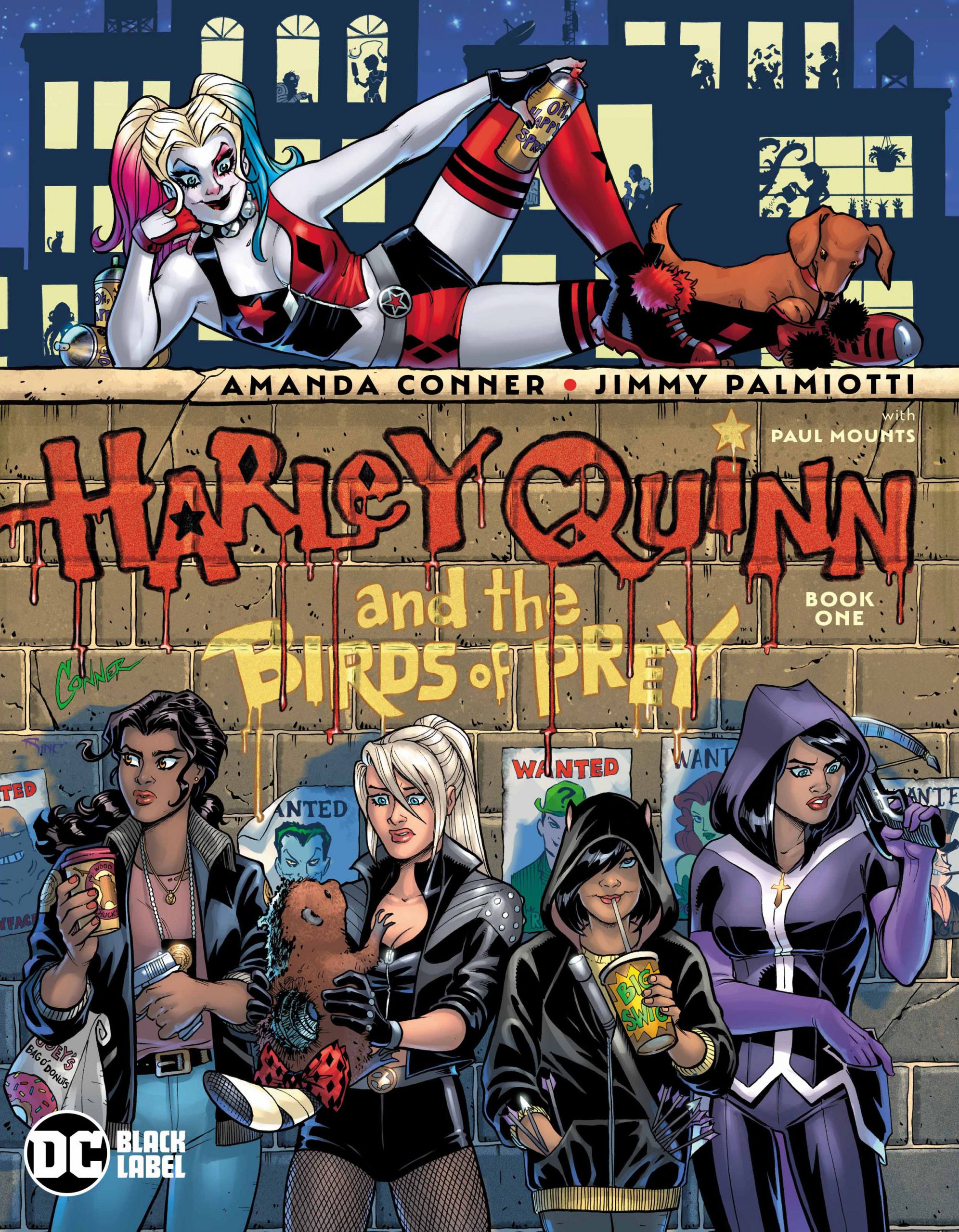Review: Harley Quinn and the Birds of Prey #1
 [Editor’s Note: This review may contain spoilers]
[Editor’s Note: This review may contain spoilers]
Writers: Amanda Conner & Jimmy Palmiotti
Art: Amanda Conner
Colors: Paul Mounts
Letters: John J. Hill
Reviewed by: Matthew B. Lloyd
Summary
After experiencing some financial trouble Harley Quinn goes to Gotham to try and sort things out. Unfortunately, the Joker gets wind of it and prepares a reception committee. The Huntress is aware of what’s happening and takes things into her own hands.
Positives
I’ve been a fan of Amanda Conner’s art for a long time, so it should be no surprise that this stands out as the biggest positive. Amanda back on interiors is always a good thing! Amanda does all the things she does well, pacing, framing, expressions- you name it, she does it. Amanda Conner on art is an automatic!

Surprisingly, all the jokes land really well. I wanted to cover my ears a few times, but the Black Label humor hits the mark with regularity and LOL’s. I can honestly say I’ve never used the phrase “genital humor” before, but this issue is a prime example of it. You want jokes about penises? They are in Harley Quinn and the Birds of Prey #1. You want jokes about vaginas? They are in Harley Quinn and the Birds of Prey #1.
Normally, Harley Quinn’s dialogue is unbearable, but this time it not only makes a lot more sense than normal, Conner and Palmiotti find a way to push the whole comic closer to satire and parody. This plays well for Harley. Overall, the writing is sharp.

Negatives
Despite knowing it was a Black Label book, I didn’t find that a positive element for the comic. I know, I already said that the jokes landed, and yes, they were almost exclusively Black Label variety, it was not as enjoyable as it should’ve been. There’s a lot of sexuality in the book, Harley is even called out as a “horn dog” by Power Girl. The humor seems geared toward a 13 year old boy’s bedroom, and yes I remember what that’s like. Unfortunately, it doesn’t come across as an adult book in the same sense as Ed Brubaker’s Criminal. It’s adult in that the humor and language is for adults, but it has the sophistication of an adolescent.
Perhaps, the most jarring aspect of the comic is seeing Helena Bertinelli, the Huntress, return to her murderous ways. While Black Label books may not be “in continuity,” seeing Helena killing people seems to go against what Julie and Shawna Benson depicted in their run on Batgirl and the Birds of Prey. Essentially, Barbara and Dinah (Batgirl and Black Canary) prevent Helena from becoming a killer. It feels wrong and appears to be an attempt to create synergy with the Harley Quinn led Birds of Prey (And the Fantabulous Emancipation of One Harley Quinn) film which hit theaters this past weekend.

Negatives Cont’d
And that’s sort of the biggest problem with this comic. It’s intended to reflect the status quo in the film, but the Birds of Prey have never had anything to do with Harley Quinn. Harley approaches Helena with a familiarity that is clearly based on the relationships in the film, they’ve never had this sort of camaraderie in the comics. I suppose that’s fine if you’ve just seen the film and are looking for more R-rated Harley Quinn material, but it’s really not part of the comics. And it should’t be. If Margot Robbie wants to destroy the Birds of Prey in the film, it definitely shouldn’t be reflected in the comics. The Birds of Prey is a great concept, and has been done well in the comics. DC doesn’t need to take the direction of the film.
Verdict
I surmise that Harley Quinn fans will find a lot to like in this comic. If you aren’t really into the character, though, or aren’t ready for some very coarse humor, I don’t think there’s a lot here for you. As a long time Birds of Prey fan, the comic doesn’t really deliver. Like the film, it’s a Harley Quinn vehicle with Helena conforming to a portrayal that fits what is in the film as opposed to a depiction that is congruent with the comics. Technically, Conner and Palmiotti get the job done, but the concept is unwanted from the beginning. These two intellectual properties don’t belong together and there’s nothing to bring the reader back for #2.
